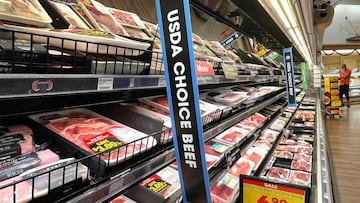Which states will see SNAP payments shrink in the next months?
Several changes may affect SNAP household benefit levels in the following months.


Emergency allotments, a temporary increase to SNAP payments implemented during the COVID-19 pandemic, will terminate in all states as of the February 2023 distribution. The high cost of living adjustment to Social Security payments that went into effect on January 1, 2023, would also reduce SNAP benefits for families receiving both programs.
We now know it as the Supplemental Nutrition Assistance Program, although it was once known as Food Stamps.
SNAP benefits will reduce to pre-pandemic payments in April. Since March 2020, SNAP participants have received a second monthly payment. Soon those second payments will be taken away. Vegas nonprofits like The Just One Project are here to help.https://t.co/su4WoxjcRA@News3LV pic.twitter.com/Jm48lbDdij
— Tiffany Lane (@TiffanyNews3LV) January 21, 2023
The average family has received an extra $95 or more over the last three years.
To assist low-income people and families in coping with the difficulties of the COVID-19 outbreak, Congress temporarily granted SNAP emergency allotments. After the February 2023 issue, emergency appropriations will no longer be made under the Consolidated Appropriations Act 2023. As a result, benefits for all SNAP families will revert to their pre-enhancement levels by March 2023.
Those supplemental emergency payments will no longer be available in 17 states as of January 2023. According to the Food and Nutrition Service of the United States Department of Agriculture, these are the following states:
Alaska, Arizona, Arkansas, Florida, Georgia, Idaho, Indiana, Iowa, Kentucky, Mississippi, Missouri, Montana, Nebraska, North Dakota, South Dakota, Tennessee, and Wyoming.
The FNS reports that beginning with the March 2023 benefit month, the supplemental funds will no longer be available in the remaining 32 states, the District of Columbia, Guam, and the U.S. Virgin Islands.
Only the Social Security adjustment will affect SNAP families receiving Social Security payments
Related stories
The effect is not proportional to the cost. The Social Security adjustment is a net gain for SNAP participants since it boosted Social Security payments more than lowered SNAP benefits. However, some families would still face a higher fall in their SNAP payments owing to the termination of emergency allotments at or around the same time.
FNS predicts that the 8.7% increase in Social Security payments will affect most families’ SNAP benefits. But, as the government put it, “all affected families will enjoy a net gain,” since the rise in Social Security payments exceeds the fall in SNAP benefits.

